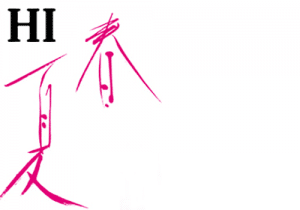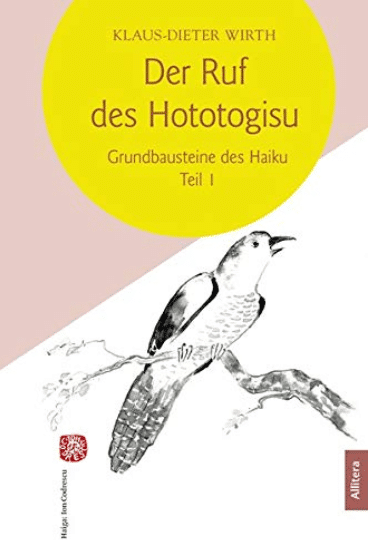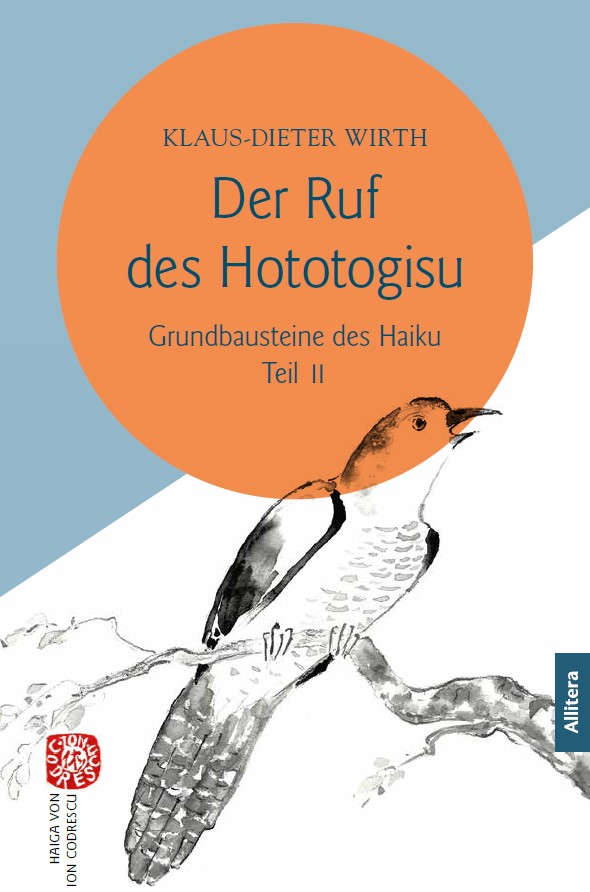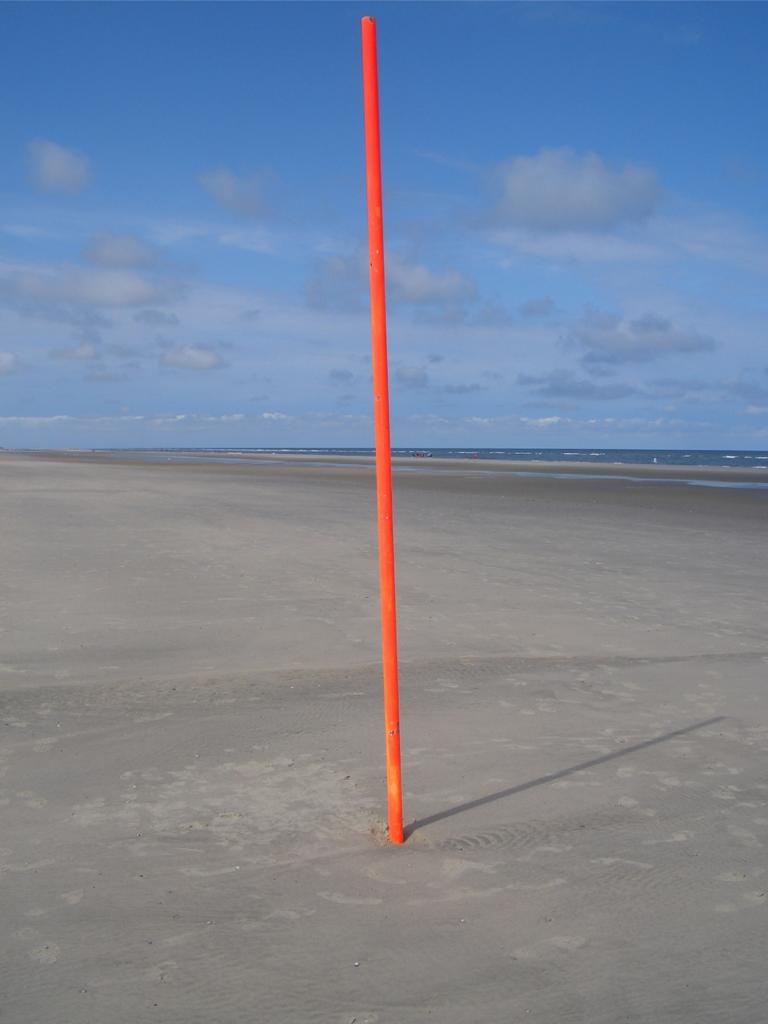Ausgewählte Haiku
 übersetzt (und mit Anmerkungen versehen)
übersetzt (und mit Anmerkungen versehen)
von Martin Thomas
»Hier können Idee und Hintergrund zu diesem Projekt nachgelesen werden.
抱く猫の / 梅雨の湿りの / 重さかな
daku neko no / tsuyu no shimeri no / omosa kanaRegenzeitnässe –
wie schwer sie doch ist,
die Katze im Arm関島多佳子(明石) Sekijima Takako (Akashi) [1]
Die „Regenzeit“ (tsuyu 梅雨), welche sich in Japan in den Monaten Juni und Juli durch heftige und lang anhaltende Niederschläge bemerkbar macht, gilt im Haiku als klassisches Jahreszeitenwort für den Sommer. Sie legt sich nicht nur auf die Laune der Menschen, sondern stellt aufgrund der hohen Luftfeuchte auch eine körperliche Belastung dar. Die Autorin des Gedichts verlagert die Aufmerksamkeit im vorliegenden Haiku dabei auf eine interessante Beobachtung: Irgendwie scheint sich ihre Katze während der Regenzeit schwerer anzufühlen als sonst. Ob dies am durchnässten Fell der Katze liegt, die gerade von draußen nach drinnen gekommen ist, oder eher an der eigenen Ermüdung, welche der dauernde Regen hervorruft, bleibt der Interpretation des Lesers überlassen.
梅雨空に / 睨みを効かせ / 鬼瓦
tsuyuzora ni / nirami o kikase / onigawaraIn den Regenhimmel starrend,
verschafft er sich Achtung,
der Teufel vom Dachfirst渡邉美奈子(神奈川) Watanabe Minako (Kanagawa)
Dieses Gedicht widmet sich ebenfalls der Regenzeit. Hier liegt der Fokus jedoch nicht auf einem Haustier, sondern auf einem traditionellen Element der japanischen Architektur. Als onigawara 鬼瓦 werden Dachziegel bezeichnet, die mit einem Teufelsgesicht versehen sind und sich an den Enden eines Dachfirsts befinden. Früher dienten sie vor allem dazu, böse Geister abzuwehren, heutzutage werden sie nur noch selten verbaut. Ihren Ursprung sollen diese besonderen Dachziegel in Medusenköpfen haben, die an antiken Tempelanlagen in Europa und auf der Arabischen Halbinsel zu finden sind. Über die Seidenstraße kamen sie dann zunächst nach China, ehe sie in der Nara-Zeit (710–794) auch in die japanische Architektur Einzug hielten.
siehe auch Wikipedia
魔笛観し / ウィーンの良夜 / 旅終る
mateki mishi / Wīn no ryōya / tabi owaruNach der Zauberflöte
endet die Reise
mit einer Mondnacht in Wien小野正之(千葉) Ono Masayuki (Chiba)
Reiseeindrücke sind ein häufig gewähltes Sujet im Haiku. Dabei werden in jüngerer Zeit auch immer öfter Erlebnisse aus dem Ausland geschildert. Diese sind sogleich Beleg dafür, dass Traditionalisten nicht unbedingt recht haben, wenn sie auf einer nur in Japan erlebbaren Naturverbundenheit beharren. Schließlich werden sogar Jahreszeitenwörter auf die fremde Umgebung übertragen. In diesem Gedicht ist es die „Nacht, in der man den Mond gut sehen kann“ (ryōya 良夜, wörtl. „gute Nacht“), welche diese Funktion als Jahreszeitenwort für den Herbst erfüllt. Gemeint ist hiermit insbesondere die Nacht vom 15. auf den 16. Tag des 8. Monats nach dem alten Mondkalender, in der man den „Herbstvollmond“ (meigetsu 名月) beobachten kann. Der vom Autor des Gedichts geschilderte Abend in der Oper scheint durch die klare Mondnacht verschönt zu werden und einen gelungenen Abschluss seiner Reise nach Europa zu bilden.
山荘に / 来て知る冬の / きびしさを
sansō ni / kite shiru fuyu no / kibishisa oErst in der Berghütte
wird mir die Strenge
des Winters bewusst大久保白村(東京) Ōkubo Hakuson (Tōkyō)
Auch wenn dies nicht unbedingt für japanische Gebäude gelten mag, so haben uns unsere modernen Behausungen doch merklich die Furcht vor dem Winter genommen. Gebäudeisolierung und Heizung sorgen dafür, dass uns selbst bei kalten Außentemperaturen wohlig warm ist. Der Autor des vorliegenden Gedichts wird auf diesen Sachverhalt aufmerksam, als er sich in eine Hütte in die Berge begibt. Dort ist die Kälte noch deutlich zu spüren. Wenn man möchte, lässt das Gedicht den Leser auf diese Weise auch kurz innehalten und darüber nachdenken, wie es wohl denjenigen Menschen ergehen mag, die während der kalten Jahreszeit kein Dach über dem Kopf haben. Das Erstaunen über die Gewalt der Natur, hinter welche der Mensch zwangläufig zurücksteht, bildet das Zentrum dieses Haiku.
雪兎 / まばたきすれば / 走り去る
yukiusagi / mabataki sureba / hashirisaruEin weißer Schneehase:
einmal geblinzelt,
ist er verschwunden梅田のりえ(大阪) Umeda Norie (Ōsaka)
Zwar gibt es auf Hokkaidō, der nördlichsten der japanischen Inseln, tatsächlich auch reale Schneehasen, doch ist in diesem Gedicht mit yukiusagi 雪兎 wohl eher ein aus Schnee geformtes Abbild gemeint. Diese handtellergroßen Halbkugeln, denen man grüne Ohren aus den Blättern des Scheinlorbeerstrauchs und rote Augen aus den Früchten des Himmelsbambus verpasst, können als kleinformatiges Äquivalent der hierzulande beliebten Schneemänner, die im Japanischen yukidaruma 雪達磨 heißen, betrachtet werden. Aufgrund ihrer geringen Größe, dauert es natürlich nicht sehr lang, ehe diese Gebilde durch die Sonne geschmolzen und somit „davongelaufen“ (hashirisaru 走り去る) sind. Im oben stehenden Haiku fungiert der Schneehase als klassisches Jahreszeitenwort für den Winter.
siehe auch photo-AC
カーテンを / 開ければ窓の/ 雪景色
kāten o / akereba mado no / yukigeshikiNach dem Öffnen der Vorhänge
im Fenster
eine Schneelandschaft澤野藤子(石川) Sawano Fujiko (Ishikawa)
Wer kennt diese Situation nicht: Man schaut im Winter am Morgen aus dem Fenster und stellt plötzlich fest, dass es über Nacht geschneit hat. Das vorliegende Haiku versucht, diesen Überraschungsmoment formal einzufangen, indem bis zum letzten Segment des Verses gewartet wird, ehe sich das gezeichnete Bild offenbart. So ist es weniger der Inhalt, sondern vielmehr die Gestaltung, die dem Gedicht das gewisse Etwas verleiht. Die „Schneelandschaft“ (yukigeshiki 雪景色) selbst bildet das Jahreszeitenwort des Gedichts und weckt bei dem ein oder anderen Literaturinteressierten wohl Assoziationen zum Roman „Schneeland“ (Yukiguni 雪国, 1935–37) des japanischen Literaturnobelpreisträgers Kawabata Yasunari (1899–1972).
クリスマス / 早く終るか / 教授会
kurisumasu / hayaku owaru ka / kyōjukaiWeihnachten –
wird sie wohl bald enden,
die Fakultätssitzung?松井貴子(横浜) Matsui Takako (Yokohama)
Für den deutschen Leser mag es zunächst ein wenig merkwürdig anmuten, dass die Autorin dieses Haiku davon spricht, dass an Weihnachten gearbeitet wird. Tatsächlich ist in Japan der 25. Dezember kein gesetzlicher Feiertag, schließlich ist das Christentum dort kaum verbreitet. Unter der jungen Generation hat sich jedoch der Brauch etabliert, sich an Weihnachten mit seinem Partner zu einem besonderen „Weihnachtsdate“ (kurisumasu dēto クリスマスデート) zu treffen. Ob die Autorin des Gedichts selbst an der Fakultätssitzung teilnimmt und deren Ende herbeisehnt oder ihr Partner Überstunden in der Universität schiebt, geht aus dem Text nicht hervor. Die Fakultätssitzung scheint der Abendplanung jedoch definitiv im Wege zu stehen.
余生から / 呼び戻されて / 雪を掻く
yosei kara / yobimodosarete / yuki o kakuAus dem Ruhestand
zurückbeordert,
schippe ich Schnee和田 仁(秋田) Wada Jin (Akita)
Dieses Gedicht lebt vor allem von seinem humoristischen Unterton. Der Autor, welcher während seines „Lebensabends“ (yosei 余生) keinen wirklichen Verpflichtungen mehr scheint nachkommen zu müssen, erhält durch den gefallenen Schnee eine neue Aufgabe und wird förmlich ins Leben „zurückgerufen“ (yobimodosarete 呼び戻されて). Dabei kommen über den Text auch eine gewisse Freude und ein gewisser Stolz zum Ausdruck, da er sich auf diese Weise endlich wieder einmal nützlich machen kann. Gerade die im Nordwesten der Hauptinsel Honshū gelegene Präfektura Akita, aus welcher der Autor stammt, ist für die starken Schneefälle im Winter bekannt und gehört zu den schneereichen Regionen Japans.
自分史の / 皺の深さよ / 初鏡
jibunshi no / shiwa no fukasa yo / hatsukagami
Neujahr –
tief sind die Spuren des Lebens
in meinem Spiegelbild国沢凛風(神奈川) Kunisawa Rinpū (Tōkyō)
Die Übersetzung dieses Haiku bedient sich einiger Tricks, sodass sie am Ende recht deutlich vom Original abweicht. Zunächst findet man im ursprünglichen Text im letzten Segment das Jahreszeitenwort hatsukagami 初鏡, das im Japanischen genau aus fünf Moren besteht. Inhaltlich wird hiermit auf den „ersten Blick in den Spiegel im neuen Jahr“ verwiesen. Da diese inhaltliche Übertragung im Deutschen für ein Haiku zu lang ist, wurde der Zeitrahmen in der Übersetzung – nicht ganz korrekt – genau auf Neujahr gelegt. Ein weiterer Unterschied besteht in zwei semantischen Verschiebungen. So ist mit jibunshi 自分史 eigentlich die „eigene Lebensgeschichte“ gemeint und das Wort shiwa 皺 könnte auch konkreter mit „Falten“ übersetzt werden. Leider kommt man bei Haiku-Übersetzungen aus dem Japanischen aufgrund der einzuhaltenden Kürze und der notwendigen Übertragung der Jahreszeitenwörter häufig nicht ohne solche kleinen Mogeleien aus.
君逝きて / 寒緩ぶ日の / なかりけり
kimi yukite / kan yurubu hi no / nakarikeriDu bist von uns gegangen –
die kalten Tage
wollen nicht enden介弘浩司(福岡) Sukehiro Hiroshi (Fukuoka)
Dieses Haiku ist angesichts der vorherrschenden traditionellen Ausrichtung von Haiku International ungewohnt persönlich. Der Autor beschreibt das schmerzliche Abschiednehmen von einer ihm nahestehenden Person. Der lyrische Kontext legt dabei die Vermutung nahe, dass es sich bei kimi 君 (wörtl. „Du“) entgegen der umgangssprachlichen Verwendung um den eigenen Lebenspartner und nicht nur einen engen Freund handelt. Seitdem die geliebte Person gegangen ist, bleiben die Tage kalt und werden nicht wärmer. Die eigenen Emotionen werden anhand der Natur objektiv beschrieben und über das Gedicht nach außen getragen.
春浅し / コインランドリー / 待つ時間
haru asashi / koinrandorī / matsu jikanErste Frühlingstage –
warten auf
die Münzwaschmaschine斎藤澄子(東京) Saitō Sumiko (Tōkyō)
Dieses Gedicht kann seine Wirkung wohl nur richtig entfalten, wenn man einen genauen Blick auf das Jahreszeitenwort wirft. Haru asashi 春浅し verweist im Japanischen auf die ersten Frühlingstage, welche zwar kalendarisch als solche zu erkennen sind, sich jedoch aufgrund der anhaltenden Kälte nicht als solche anfühlen. Das Warten auf den spürbaren Beginn des Frühlings überlagert sich somit mit dem Warten auf die Waschmaschine. Diese Kombination ist es schließlich auch, die diesem Haiku eine besondere Art von monotonem Klang verleiht, der sich auch auf den Leser überträgt. Der Vers wirkt beinahe belanglos und steht sicherlich vor der Gefahr, überlesen zu werden. Verhindert wird dies nur durch die „Münzwaschmaschine“ (koinrandorī コインランドリー), die im mittleren Teil des Verses im Original sowohl thematisch als auch optisch aufgrund der Katakana-Schreibung hervorsticht.
新装の / パン屋の試食 / つばめ来る
shinsō no / pan’ya no shishoku / tsubame kuruEine Bäckerei in neuem Gewand –
zur Verkostung
kommen auch die Schwalben zurück矢野真緋子(広島) Yano Mahiko (Hiroshima)
Auch in Japan zählt die Schwalbe zu den Zugvögeln. Im traditionellen Haiku wird dieser Tatsache Rechnung getragen, indem jeweils ein Jahreszeitenwort für die „zurückkehrenden Schwalben“ (tsubame kuru 燕来る) im Frühling und ein Jahreszeitenwort für die in den Süden „heimkehrenden Schwalben“ (tsubame kaeru 燕帰る) im Herbst existiert. Darüber hinaus führen klassische Jahreszeitenwörterbücher mehr als 20 weitere Bezeichnungen für die unterschiedlichen Lebensgewohnheiten von Schwalben während der verschiedenen Jahreszeiten. Im oben stehenden Gedicht überlagert sich die Rückkehr der Schwalben mit der Neueröffnung einer Bäckerei, die renoviert wurde. So sind es nicht nur die neugierigen Menschen, die einen Blick auf den neuen Laden werfen wollen, sondern auch die Schwalben, die sich den einen oder anderen Brotkrumen erhoffen.
人気なき / 国分寺跡 / すみれ草
hitoge naki / kokubunji-ato / sumiregusaMenschenleer –
auf den Überresten des Provinztempels
wachsen Veilchen草野准子(東京) Kusano Junko (Tōkyō)
Dieses Gedicht erinnert thematisch ein wenig an das berühmte Sommergras-Haiku von Bashō (1644–1694), welchem die Vierteljahresschrift der Deutschen Haiku-Gesellschaft ihren Namen verdankt. Zwar sind es hier nicht die Überreste der Träume und Sehnsüchte von Soldaten, derer sich die Natur bemächtigt, indem sie das ehemalige Schlachtfeld mit Sommergras überwuchern lässt, insgesamt bleibt die Aussage jedoch dieselbe: der Mensch steht hinter der Natur zurück. Im vorliegenden Gedicht geht dies mit einer gewissen Wehmut ob des zerfallenen Kulturguts, für das sich niemand mehr zu interessieren scheint, einher. Dort, wo niemand wandelt, haben sich „Veilchen“ (sumiregusa すみれ草) ausgebreitet, die als Jahreszeitenwort dem Frühling zugeordnet werden. Die ersten fünf Moren könnten prinzipiell auch im Sinne von „wenig beliebt“ (ninki ga nai 人気がない) aufgefasst werden.
[1] Die Wiedergabe der Autorennamen erfolgt unter Berücksichtigung der in Japan üblichen Voranstellung des Nachnamens vor den Vor- bzw. Künstlernamen.







